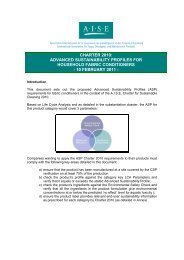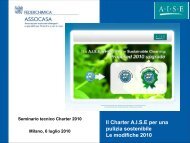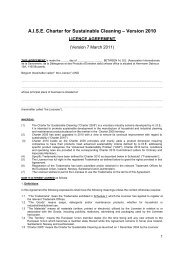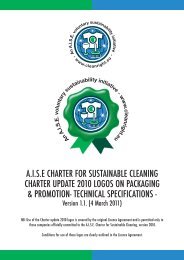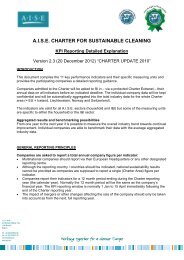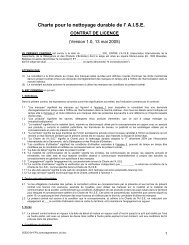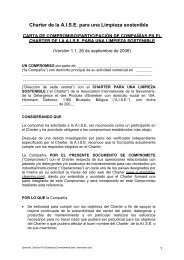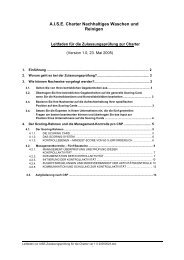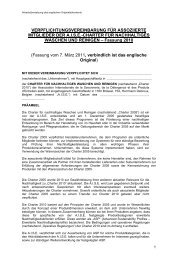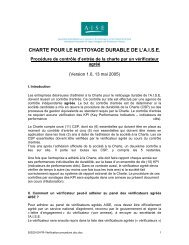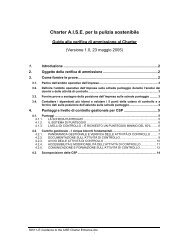ASP Substantiation Dossier - Sustainable Cleaning
ASP Substantiation Dossier - Sustainable Cleaning
ASP Substantiation Dossier - Sustainable Cleaning
You also want an ePaper? Increase the reach of your titles
YUMPU automatically turns print PDFs into web optimized ePapers that Google loves.
Secondary packaging (e.g. cartons/cases) re-cycled content<br />
The data provided to A.I.S.E. of current re-cycled secondary packaging content used by several major<br />
manufacturers, representing the majority of the laundry detergents market, indicates that the<br />
percentage of re-cycled secondary packaging material varies from 50% to 90%. The consultation<br />
sought to establish a reasonable threshold for liquid laundry detergents meeting the re-cycled content<br />
criteria. This threshold should be both achievable by manufacturing companies, using conventional<br />
technologies yet leading to environmental benefit. A threshold of 60% was confirmed. As one result of<br />
the consultation outcome, following exception will be made: In countries where re-cycled board is not<br />
available and a use of it would be a disadvantage for sustainable reasons, the use of re-cycled board<br />
is not required.<br />
End-User Information<br />
As figured out in the life-cycle analysis, the most significant impact on the environment is in the use<br />
phase of the product’s life, due to the significant amounts of energy and water consumed by the<br />
washing machine.<br />
At the end of 2008, A.I.S.E. ran a consumer survey across more than 500 consumers in 23 different<br />
countries about their current washing habits. This survey showed that there is still significant<br />
progress to be achieved in the way consumers wash. For instance:<br />
- Only 49% of washing machine loads are full<br />
- The average wash temperature is 42.6°C<br />
- Only 76% of consumers indicate that they are aware of the dosing instructions.<br />
Considerable savings, both environmentally (water, energy, CO2, chemicals), and economic (financial<br />
savings for consumers due to correct dosing and efficient use of the appliance), could be reached<br />
through better sustainable consumer behaviour. In addition to formulating products that are<br />
concentrated, it is also key to continue providing the consumers advice about wash parameters and<br />
correct dosage. Companies will be requested to use the Washright Panel, which had been introduced<br />
by A.I.S.E. in 1998 and revised in 2008, or an alternative (see Annex 2 of advanced sustainability<br />
profiles), and to indicate the ability to wash at ≤ 30° C on pack. Evidence has to be provided that the<br />
product has been performance tested and reached a level acceptable to consumers consistent with<br />
claims made. This was confirmed as one outcome of the consultation.<br />
8




